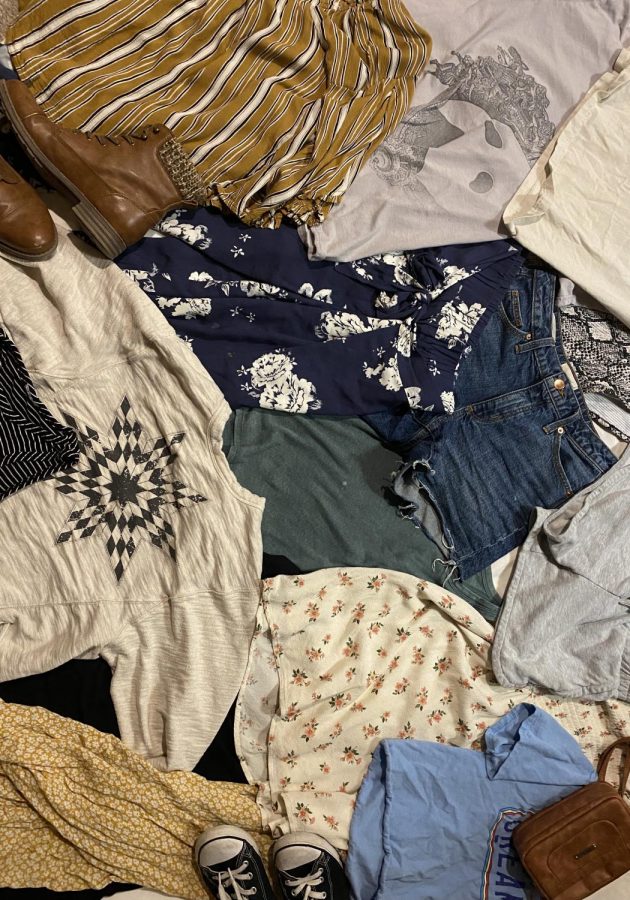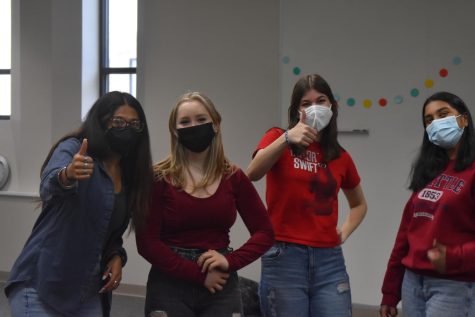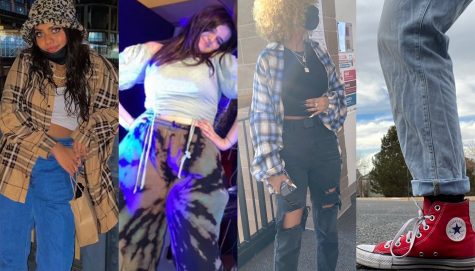Thrifting: Gentrification or Eco-Friendly Solution?
Our world is on fire.
This last summer was the hottest of our lives so far, yet the coldest of our time yet to come, with our clothing alone contributing to 10% of all greenhouse emissions.
But there is a light at the end of the tunnel. Movements have sparked among the younger generation, with marches every Friday around the globe.
The Paris Climate Accords have been signed by 197 countries, with a commitment to curb emissions.
Eco-minimalism can be seen on hundreds of Instagram pictures, often featuring a mason jar full of all the trash someone has produced in a single year.
So, as people began to turn over and analyze every aspect of our lives and look for a more sustainable solution, it was only time before our clothing was put under the microscope.
That’s where thrifting comes into the mix.
I am willing to bet that almost anyone reading this has entered a Goodwill or Salvation Army before to a pretty normal sight — racks on racks of used clothing from wall to wall. Hangers crammed so close together that it is difficult to even leaf through the racks.
These clothes are already there; already in physical material. There are no greenhouse emissions that need to go into the atmosphere to make new garments.
The condition is superb, with many pieces only being gently worn, with few to no wear or tear.
Better yet, it lengthens the life of clothes that would normally go to the landfill, a life that has been shrinking steadily for years now.
Thanks to the rise of social media, especially with the short format of Tik Toks, microtrends have begun to emerge.
Whereas in decades past, trend cycles have been split between seasons, and mainly based on mainstream celebrities in Hollywood. Yet now, you can just open an app to the latest updates from your favorite idols.
The trend cycles have begun to shrink, changing every month practically. The items at the top of the trends a month ago are now baseless and “old school”. They are now behind the times, ready to be thrown into the back of a closet, never to see the light of day again.
And who can forget the age-old rule of never repeating outfits.
The cherry on top of this throw-away, absent-consumer culture, is the increasing popularity of fast fashion websites.
Shein. Romwe. Fashion Nova. Zaful. Boohoo.
Sites where a shirt that meets the latest trends will cost you a measly six dollars. A site where the expensive side is anything above 15 dollars.
While these sites have allowed for lower income people to be able to access both cute and affordable clothing, especially in the plus sized category, those individuals are not the main source of issue with these fast-fashion empires.
The main source behind the issue is the wealthy individuals, who have more than enough money to shop more ethically, but instead choose to drop hundreds of dollars on massive hauls from these sites.
Not to mention the thousands of human rights issues behind the production of these cheap garments. But, that is a whole other can of worms.
So, one would begin to think that thrifting is the answer to all these problems?
Absolutely not.
While this system may have its advantage to it, there is a whole other side that we have yet to consider.
Who were thrift shops originally created for? Decades ago, when wearing second-hand clothing was seen as a shame, it was for those who could not afford new products.
These shops were created to service low income families, allowing them to be able to clothe themselves without breaking the bank. The money spent here would also be funneled back into the local community through non-profit organization efforts.
It wasn’t just for clothing, either. Furniture, appliances, kitchen utensils, household items, technology could all be accessed for a lower price.
Now fast forward a couple decades where fast fashion clothing has flooded into thrift shops, but you can still find a solid, vintage brand among the swamps of Shien and Forever 21.
Unfortunately, you rarely find these pieces anymore. Instead, they have been swiped off the hangers shortly after opening time by resellers.
Thanks to the rise of reselling apps like Poshmark and Depop, resellers are emptying out thrift stores of the high quality clothing, leaving low-income people to pick through the remains.
That does not seem like an eco-friendly solution to me.
That is gentrification, plain and simple.
Gentrification, in the simplest terms, is where a low income community sees an insperce of wealthier people, inflating the local economy, and driving out the original inhabitants once it becomes unaffordable for them.
This is already happening in thrift stores. A shirt that once cost three to five dollars now retails for six to ten. While these prices have continued to inflate, minimum wage has not.
Gentrification starts small, then begins to disperse to the large economy. Rent rates. Property taxes. Income tax. All forms of inflation that most people just cannot afford.
This is a current issue that is only beginning to dig its claws in the communities that are most affected.
Claws that are forming a festering wound that if not doctored properly, will only continue to infect more and more, until the affected communities become almost unrecognizable.
While climate change is still a pressing issue, it is the present. Low-income communities are currently being affected by thrifting-based gentrification, but the choice of the matter is always left up to the individual consumer.
Nothing is perfect; someone always loses.
Please, just keep in mind where you are choosing to shop. Your dollar has power, so please vote with it.
Simply, be conscious.



![Best of the Met [OPINION]](https://ghschronicle.com/wp-content/uploads/2023/01/Opinionsnew-475x251.jpg)








![Bill HB24-1448: What Does It Mean? [OPINION]](https://ghschronicle.com/wp-content/uploads/2024/05/Hayne-Photo-1-600x450.png)



